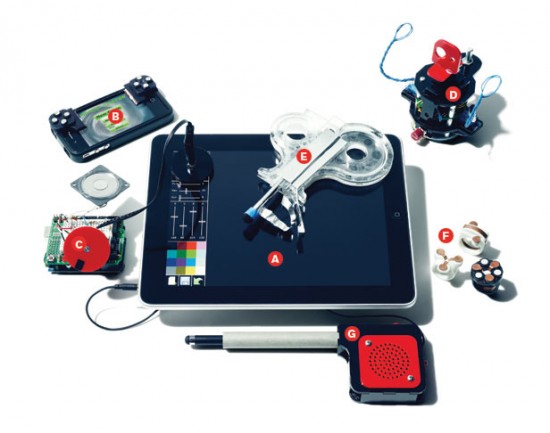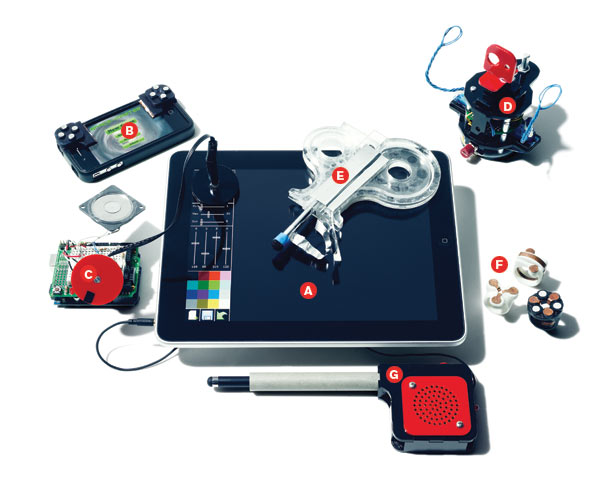Intelligent Machines
Pushing the Limits of the Touch Screen
An engineer has rigged up several devices that enable a touch interface to respond to nuances such as pressure.



Making pinching or flicking motions against the screen of a smart phone or tablet is often more intuitive than navigating a computer screen with a mouse, but Michael Knuepfel thinks touch screens can do much more. Knuepfel, who just graduated from New York University’s Interactive Telecommunications Program, has created devices that enable the screens to register more aspects of a user’s touches. His goal is to make touch-screen interactions “more tactile, more physical, and potentially more expressive and fun.”
A. Touch Screen
Knuepfel’s devices work with “capacitive” touch screens such as the one in this iPad. The iPhone, as well as most smart phones and tablets, uses similar technology. It works by detecting the way a user’s finger disrupts the pattern of electrical charge on the screen. Like the moves and clicks of a mouse, this information can be converted into an input.
B. Video-Game Controller
Playing most video games involves pressing buttons quickly, acting by feel rather than sight. A touch screen is difficult to use that way, so Knuepfel turned one into a game controller by adding physical buttons. He applied conductive material that creates an electrical path from a finger to the screen when a button is pressed.
C. Pulse Generator
Knuepfel modified an electrode with external circuitry and duct-taped it to the screen to create a prototype pulse generator. The electrode simulates the human touch and sends touch “pulses” at a rate detected by the screen. Analog inputs, such as information about varying volume or pressure, could be converted into a faster or slower series of pulses so that the touch screen could process them.
D. Light-Sensor Output
To make his creations even more useful, Knuepfel wants them to be able to receive data from the touch screen in addition to providing it. For example, he created a prototype robot that has a light sensor and can sit on top of a touch screen. When a user touches the screen, the device translates the gestures into light patterns; the robot detects them and moves accordingly.
E. Mechanical Stylus
Today’s touch screens respond the same way no matter how hard you press on them. Knuepfel’s mechanical stylus demonstrates one way that could be changed. The device has two arms, which spread farther apart as the user applies more pressure. Software detects the distance between the arms, thinning or thickening a corresponding line that appears on the screen.
F. Signet Ring
Capacitive touch screens can also accept input from multiple simultaneous touches. That’s the basis of a low-level security feature Knuepfel designed. He made rings that use conductive material to create several electrical pathways from the user’s fingers to the screen. These pathways are arranged in a distinct pattern; software on a tablet could look for a user’s pattern before allowing access to private content.
G. Sound Stylus
This stylus includes a wire that plugs into an iPad’s microphone input jack. Pressing the stylus to the screen generates pulses of sound that speed up with greater pressure. The software interprets the sound data to thicken or thin a line drawn by the stylus.